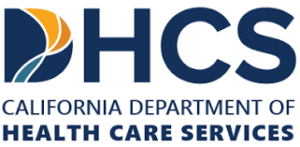The opioid crisis is a global concern that has been escalating at an alarming rate. This conversation aims to peel back the layers of this pressing issue, providing a comprehensive overview of its causes and potential solutions.
The Opioid Crisis Demystified
The term ‘opioid crisis’ or ‘opioid epidemic’ refers to the sharp rise in the use of both prescription and non-prescription opioids over the past few decades. This surge has led to a dramatic increase in opioid overdoses and deaths, and a concurrent rise in the number of people seeking help from opioid addiction treatment centers.
Opioids themselves are a broad class of drugs that include legally prescribed medications like Oxycodone, Hydrocodone, and Morphine, and illicit substances such as Heroin and Illicitly Manufactured Fentanyl. These substances interact with opioid receptors in the brain to produce a sense of pain relief and well-being. However, their misuse can lead to physical dependence and, ultimately, addiction.
Root Causes of the Epidemic
The reasons behind the opioid crisis are multifaceted and complex, with several contributing factors:
Overprescription
In the late 1990s and early 2000s, reassurances from pharmaceutical companies about the low risk of addiction led healthcare providers to prescribe opioids more freely. This increase in availability facilitated higher rates of misuse and addiction.
Lack of Education
Many patients and even healthcare providers were not fully informed about the highly addictive nature of these medications. This lack of knowledge, coupled with the overprescription of opioids, led to widespread misuse.
Illicit Drug Use
While prescription opioids were a major contributor to the epidemic, the use of illegal opioids, such as Heroin and illicitly manufactured Fentanyl, has significantly exacerbated the crisis.
Socioeconomic Factors
Complex social and economic factors have also played a role. Lack of access to quality education, job loss, economic instability, and limited social services have all been linked to increased opioid misuse in certain populations.
Navigating the Road to Recovery: An Overview of Treatment Options
The journey to recovery from opioid addiction is often long and challenging, but numerous effective treatment strategies exist:
Medication-Assisted Treatment (MAT)
Medication-Assisted Treatment combines FDA-approved medications, such as Naltrexone, with counseling and behavioral therapies. This comprehensive approach helps manage withdrawal symptoms, reduce cravings, and address the psychological aspects of addiction.
Residential and Inpatient Treatment
Inpatient opioid treatment centers offer a controlled and supportive environment where individuals can focus entirely on recovery. With round-the-clock medical supervision and structured treatment plans, these centers provide the intensive care that those with severe addiction often require.
Outpatient Treatment Programs
For those with strong support networks and a profound commitment to recovery, outpatient programs can be a viable option. These programs offer the flexibility of living at home while attending regular treatment sessions, allowing individuals to maintain some aspects of their daily routine.
Counseling for Opioid Addiction
Counseling plays a crucial role in opioid addiction treatment. Therapies such as Cognitive Behavioral Therapy (CBT) can help individuals recognize and change harmful thought patterns, develop effective coping strategies, and improve decision-making skills.
Emergency Opioid Treatment: A Lifeline in Critical Situations
Emergency opioid treatment is a crucial aspect of addressing the crisis. This typically involves the administration of Naloxone, a medication that can rapidly reverse the effects of an opioid overdose. Training more medical professionals and even laypeople to administer this treatment is a critical step in saving lives.









